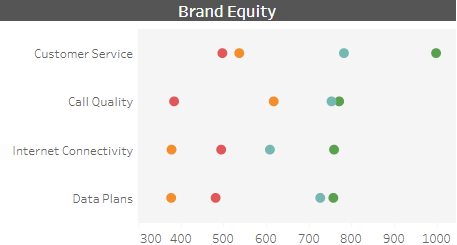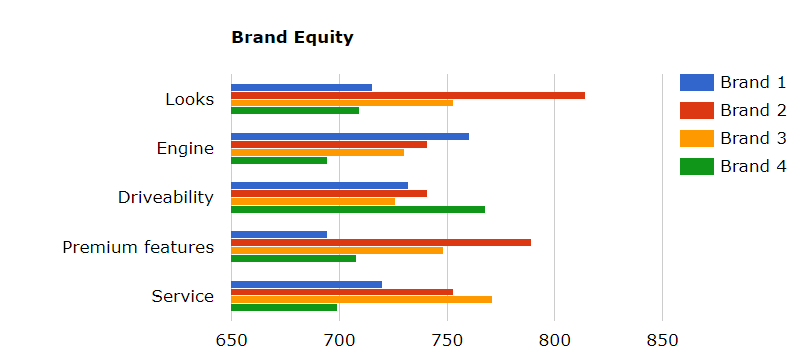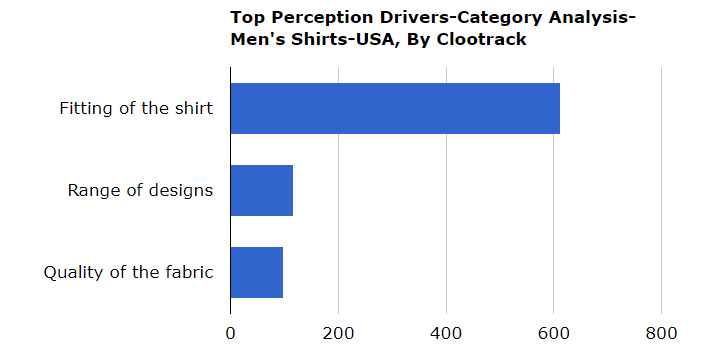What Is Product Category Analysis And Why Is It Important?

What is product category analysis?
Product category analysis is a process of evaluating product categories to deepen the understanding of the different factors that increase or decrease the demand for a product category. Product category analysis includes an overview of product categories and drilling deep into each one to finally arrive at a detailed report of each product category. It is conducted by marketers to position their products and promote them more effectively.
Product category analysis provides deep insights into customer experiences, emerging trends in the market, information about competitors and their marketing activities – these will enable you to make timely business decisions that will lead you ahead of your competitors.
Competitor analysis and customer experience analysis form part of product category analysis. As a whole, it offers brand managers and chief customer insights managers a deep understanding of what is unique and special about your brand, and how your brand should be positioned in the marketplace to deliver maximum growth and profitability.
Why is Product Category Analysis Important?
Product category analysis is important to dig deep into specific sections—such as brand, marketplace, consumer perceptions, consumer communication, trends and competitors—to draw out conclusions that will help set up your brand’s key issues
A lot of times, the customer experience officers, brand managers and other top management executives have several questions such as :
- Which product categories contribute significantly to the total sales?
- Which product categories are not performing well?
- How is our product compared to other products in the market?
- What are the trends in this product category?
- Which geographic regions have more margins?
Senior management want to see this graphically so they can easily understand and spot problems quickly.
For example, see a report that was generated by Clootrack after analyzing consumer conversations in the US Telecom industry.

The above is a brand equity report that compares several telecom brands in the US. In this report, there are clearly the top 4 drivers – Customer service, Call quality, internet connectivity and data plan.
A report like this shows who is the leader in a particular driver. With this report the brand manager can easily spot the areas of improvement, compare his position to other brands, and also identify its strong position in certain drivers.
Category analysis brings clarity and answers important questions such as:
- What is the range of products offered by the category?
- Who are your main competitors?
- What are the products sold by your competitors?
- What are the emerging trends?
- What do customers believe?
Brand managers and customer insights managers can go a long way with deep knowledge about products, customers and competition. Category analysis offers information that can help maximize your chance of connecting with customers and beating the competition.
Case Study: Product Category Analysis

Halo Top is a low-calorie and high-protein ice cream brand that taps into the healthy eating habits of consumers and provides a unique point of difference in the ice cream product category. Halo Top started small but yet went on to become North America’s sixth-biggest ice cream brand in just about six years and later expanded into the international market as well.
“For us, this wasn’t just about getting a product on a shelf,” comments David
Taylor from Halo Top. “We were bringing something very new and different to
the category, so we had to reach and educate people who weren’t buying the brand, or ice cream in general.”
Halo Top signed up for a data-driven product category analysis. The objective of this analysis was to improve sales for the brand while also driving incremental growth for its ice cream product category. Halo Top used customer intelligence available on social media and stayed focused on a very data-driven approach.
David says, ‘This is where our audience is’.
The objective of the product category analysis was to:
• Generate overall awareness about Halo Top ice cream category
• Drive higher growth for the ice cream category
Product category Insights were utilized to identify and target non-category shoppers and also to select the most relevant stores for in-store activation.
Results of the product category analysis:
The data-driven campaign delivered broad reach and product awareness.
- 17% of total brand sales generated
- 1% growth for the Luxury Ice Cream & Sorbet category
- 66% new customer engagement
Product category analysis empowered Halo Top to compete and thrive in the modern data-driven market by putting the ‘Customer First’ approach.
What is a product according to marketers?
According to marketers, a product is a means of delivering a certain benefit to a customer.
For example, when people buy a luxury car, what are they expecting from a car?
Yes, while it is important for the car to move people from one place to another, but that is not the only expectation from a luxury car. Luxury cars give customers a sense of pride because of the brand name, luxury, speed and pleasure.
A luxury car will be able to make a person feel good from inside and give them a sense of achievement and success. Here the consumers are not just thinking of the luxury car as a car, but as a status symbol.
This has been proved in a market research conducted by Clootrack.
‘Looks of a car’ – emerged as the number one category driver in the luxury car segment.

So the ‘product’ that every marketer talks about is not just the physical appearance, rather when a marketer knows exactly what drives the consumers to buy – that becomes the main product.
Understanding this is the essence of marketing.
What Are Product Categories?
A group of products that offer similar benefits can be referred to as product categories. Products from a same product category will have similar physical features and will offer similar benefits.
Example, in the luxury cars product category, cars such as the BMW, Mercedes and Audi compete with each other.
Product categories can be organized as a hierarchy of categories that resemble a tree structure or can be a flat structure such as a list of product types. All the companies relating to your product category will be pursuing the same set of customers and will have the same competitors.
For instance, apparel can be divided into several categories:

For women’s wear there are different categories such as sportswear, outdoor wear, party wear, etc.
In children’s apparel there can be further sub categories such as infant, toddlers, teens etc.
Similarly in men’s apparel there can be more categories such as work wear and active sports wear. Consumers always search the categories before they choose a specific product in a category.
What are the goals of an exhaustive Category Analysis?
Category analysis process is used to develop product category plans that are aligned to customer expectations with an ultimate aim to maximize value.
There are four main goals or objectives of conducting a category analysis:
- Identify Category Drivers
- Consumer Beliefs that Influence Consumer Behavior
- Discover Category Trends
- Measure Brand Equity
Let’s dive a little deeper into each of the objectives:
1. Identify Product Category Drivers
Identify drivers that make customers adopt the product/services of your brand
The objective of performing category analysis is to understand thoroughly what prompts consumers to use your products (drivers) and what are the crucial barriers which prevent them from further embracing your offerings.
For example, consumers buy laundry detergents to clean clothes.
One of the most important prerequisite for a successful Brand Positioning is to fully understanding category drivers.This has the power to make or break a Brand – and unfortunately not well understood.
Category analysis identifies the category drivers by using customer experience – uncover issues and opportunities that cannot be identified through traditional customer satisfaction research.
By using the highly effective customer journey mapping, brands can identify the category drivers that drive a customer to choose a product over another. By looking at the end-to-end customer journey, marketers gain a comprehensive view of all the key drivers that make a considerable impact on the customers’ choice of products.
Customer journey mapping can also reveal inconsistencies across touch points that may limit a driver to excite or delight a customer.
Knowing what drives customers to buy a product and what makes them reject a particular product can be attained by category analysis.
For instance when Clootrack performed category analysis on Men’s Apparel in USA, the top category driver emerged as ‘fitting of the shirt’, and not really the range of shirts or the quality of the fabric.
This emerged as a unique insight for apparel companies as they would have expected the quality of the fabric or range of the shirts to occupy the top position.

2. Customer Beliefs that Influence Consumer Behavior
When it comes to convincing consumers, the secret is to understand the consumer beliefs and their behavior. This will eventually lead you to know what a buyer wants from your business. A customer has a deep understanding of what they want from a product.
Consumer psychology is way too complex and non-predictive. But it is of greatest importance for marketers to decode the mind of the consumer to learn what is going on in their minds before they make the purchase decision.
In order to predict the behavior of consumers, it is necessary to understand customer beliefs and the reasons behind this belief in the first place.
Category analysis report is incomplete without analyzing the customer beliefs.
Here is an example of category analysis report of US Telecom that Clootrack analyzed. The below were the top 4 customer beliefs that emerged during the analysis.
While marketers think that it could be related to data speed – what customers believe is totally different. Their beliefs are around radiation, billing issues and overcharging.
Isn’t it quiet surprising ? Do you think these insights could have been captured without conducting a category analysis?

3. Discover Category Trends
Customer intelligence – driven by category analytics – provides companies with rich data on buyer behavior, emerging trends and customer expectations – which can be used to deliver better interactions.
Customers are craving for new, customized, personalized and pleasant experiences, and companies want to deliver them at any cost.
But how do companies read the minds of the customers?
When customers are expressing themselves on various forums, about the new experiences they would like to see in a particular product – is the brand listening to them? Probably not.
Product category analysis ensures to capture the emerging trends – upcoming features that customers wish to see in a product.
For example one of the significant emerging trends seen in the washing machine industry is that customers are asking for personalized wash programs with App. Also customers are asking for functions that will enable them to manage the amount of water and electricity consumed per wash. They are also asking for features such as auto optimal wash technology, automatic detergent dispenser, power wash system, cap dosing system, and steam care functions.
Hence major players in the industry such as Samsung Electronics Co., Ltd and Miele, who has considered emerging trends pretty seriously, are transforming the washing machine industry by introducing smart control washing machines that can be remotely monitored by using a smartphone application.
These insights on the emerging trends can be obtained by performing category analysis.
4. Measure Brand Equity
Brand equity is an indicator of the company’s strength and performance, specifically in the public markets. It is the additional value that a product receives due to its ‘well known’ status or also called as brand awareness. Brand equity eventually leads to competitive advantage that results in higher sales, higher revenues, and lower costs.
A strong brand positioning weaves an emotional connection with your customers and provides you sustainable competitive advantage irrespective of whether your brand is in the start-up phase or an established business in the industry. This is called as brand equity.
Learning about a competitor’s products and services through category analysis can provide insights on the value they offer . This helps reveal how businesses can differentiate their products from their competitors.
For instance see how an online cosmetic brand performed category analysis using Clootrak to dig into the competitive landscape.

Each of the product category drivers were analyzed for the online cosmetic brand and its close competing brands in the market. It revealed how each brand had their own strengths and weakness- importantly it showed the gaps of other brands and highlighted the areas where the online cosmetic brand could take advantage to plug the gaps.
This analysis gave the online cosmetic brand a very deep understanding of its position in the market as well as helped to map its competitors in comparison to its position.
What are the uses of Category Analysis?
Category analysis is not just a tool to analyze how your category is performing. It has a whole lot of applications and benefits. Product category analysis forms the basis for large range of marketing strategies.
1. Plan Product improvements
Although not many brands can ensure an absolutely perfect product for every customer, many brands have areas that obviously need improvement. With category analysis, CMOs can figure out where those top improvements need to be made within the business.
Brand managers need to a take a long, honest look at their customers’ experiences. Customer experience is visible all over – across your website, in your emails that you receive from customers, your social media pages, your customer service calls and chat bots. Analyze these to get deep insights into what customers are asking for in your products.
These exactly tell you what is needed for your product improvements.
2. Competitive Advantage
Consumer expectations are always changing and rising so much and so fast that many brands are struggling to keep up, much less leap ahead. But inspite of all these challenges and turbulent times – strong brands continue to create sustainable competitive advantage for businesses.
How have these strong brands made it possible? How have they remained relevant?
Brands are using tools and services that identify and solve customers’ key frustrations – when this is done in the form of analysis on a day-to-day basis – brands become embedded in their customers’ journeys. Brands such as Google, Nike, and Amazon have aimed at only one thing – a desire to become indispensable.
In a highly competitive market, including customer experiences and creating visual expressions in the form of product category analysis can make all the difference in establishing a competitive advantage.
3. Better promotion strategies
Product promotional strategies are mainly designed to inform, persuade and influence the consumer’s decisions. The main intention of promotion strategies vary among organizations. While some use promotion to hold their current position in the market, others perform promotion to expand their market.
An effective promotional strategy can help a business to differentiate its products, improve sales, increase their product value and stabilize sales. Product differentiation using the product category analysis becomes key for a business to differentiate its goods and services from those of its competitors.
Category analysis offers deeper understanding about the demographics of your customers, available distribution channels and the strategies of your competitors – with this you will be well positioned to understand the category drivers, and thereby design better promotion strategies.
4. Product Positioning and Strategy
When a company intends to relaunch, re-brand or introduce a new product – category analysis can be used to investigate the behavior of the target market. Category analysis dissects the product features and compares them with potential need of your target consumer. Brands can undertake changes or improvements to the product packaging, quality, advertising, promotion campaigns, customer service, pricing and much more using the customer insights, thereby helping to properly position their products in the market.


